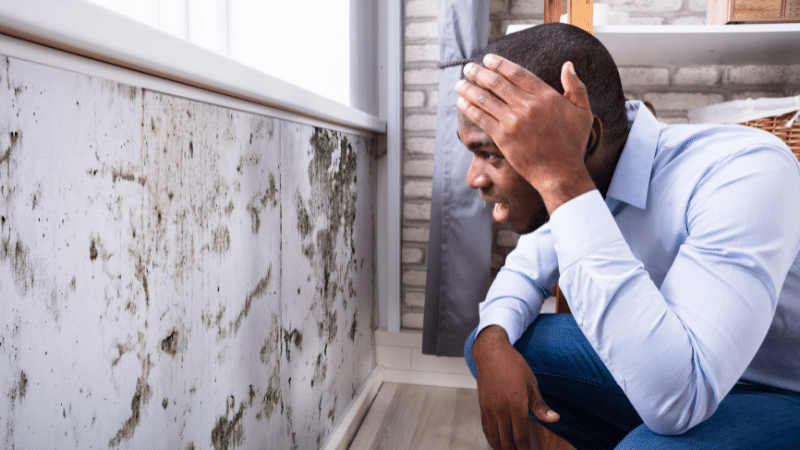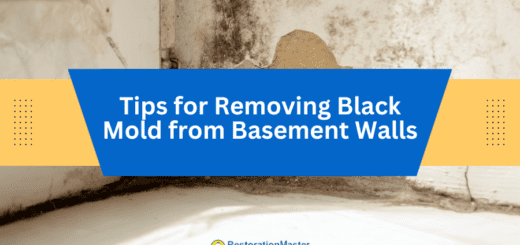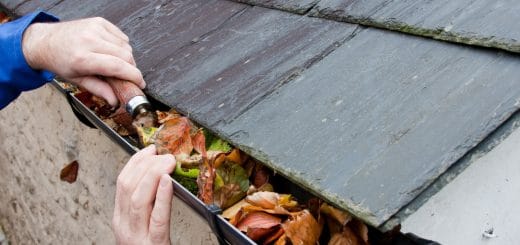What to Do if You Experience Symptoms of Mold Exposure at Your Workplace?
Indoor moldMold is a type of fungus that grows in damp or humid conditi... More is not welcome in the workplace. Working side by side with moldMold is a type of fungus that grows in damp or humid conditi... More colonies can put employees in serious danger. MoldMold is a type of fungus that grows in damp or humid conditi... More sporesSpores are microscopic reproductive units of fungi or mold t... More create unhealthy working conditions and should be removed immediately. When staff experience symptoms of mold exposure, here’s what to do.

What is mold?
MoldMold is a type of fungus that grows in damp or humid conditi... More, a type of fungus, is everywhere in the natural environment. Outdoors, moldMold is a type of fungus that grows in damp or humid conditi... More sporesSpores are microscopic reproductive units of fungi or mold t... More break down decaying organic matter, from fallen trees to dead leaves. Outdoor moldMold is a type of fungus that grows in damp or humid conditi... More plays an important role in the natural environment. Over 100,000 known species of moldMold is a type of fungus that grows in damp or humid conditi... More can be found worldwide.
Indoor moldMold is a type of fungus that grows in damp or humid conditi... More is a grave health concern, however. Mold spores eat away at organic materialsOrganic materials are derived from living organisms, such as... More, such as drywall and wood—both of which can be found in a typical workplace. When wooden structural materials are consumed by the sporesSpores are microscopic reproductive units of fungi or mold t... More, the structural integrity of the building is compromised.
MoldMold is a type of fungus that grows in damp or humid conditi... More infestations can begin in a corner of the drywall in the workplace or on paper stored in a damp file cabinet, for instance. All the moldMold is a type of fungus that grows in damp or humid conditi... More requires to live is a constant supply of moisture, organic materialsOrganic materials are derived from living organisms, such as... More, and darkness. Damp workplace conditions encourage moldMold is a type of fungus that grows in damp or humid conditi... More issues.
Why does mold appear?
MoldMold is a type of fungus that grows in damp or humid conditi... More can appear in the workplace for many common reasons. Older buildings can be ridden with moisture problems. Some buildings are constructed to be tightly sealed, which can prevent adequate ventilationVentilation is the process of exchanging or circulating air ... More and cause moisture buildup. Drywall does not allow moisture to easily escape.
Moisture problems may also stem from unrepaired roof leaks. Uncontrolled humidityHumidity is the amount of moisture or water vapor present in... More, unvented combustion appliances, and delayed maintenanceMaintenance is the routine care, inspection, and repair of a... More can result in a damp workplace environment. If the gutters direct water under the building, the continual dampness will contribute to moldMold is a type of fungus that grows in damp or humid conditi... More outbreaks.
What molds are toxic?
Black moldMold is a type of fungus that grows in damp or humid conditi... More, also known as StachybotrysStachybotrys is a type of black mold (often called “black ... More chartarum, has a widespread reputation for being toxic; in fact, black moldMold is a type of fungus that grows in damp or humid conditi... More is often referred to as toxic black moldMold is a type of fungus that grows in damp or humid conditi... More. The reality, however, is that black moldMold is a type of fungus that grows in damp or humid conditi... More is not any more toxic than any other colors or types of molds.
But moldMold is a type of fungus that grows in damp or humid conditi... More is dangerous to people who are sensitive or allergic to moldMold is a type of fungus that grows in damp or humid conditi... More. Black mold, for instance, produces toxic chemicals known as mycotoxinsMycotoxins are toxic substances produced by certain types of... More. While inhaling black moldMold is a type of fungus that grows in damp or humid conditi... More sporesSpores are microscopic reproductive units of fungi or mold t... More has not been linked to deadly diseases, there are risks for people who suffer from asthma, allergies, or other hypersensitivities.
What are the symptoms of mold exposure?
Toxic moldMold is a type of fungus that grows in damp or humid conditi... More syndrome, which includes symptoms, like headache, memory loss, fatigue, and an inability to focus, is based more on media hype than on reality. Rather, the real danger is when people with moldMold is a type of fungus that grows in damp or humid conditi... More allergies develop adverse health symptoms after being exposed to moldMold is a type of fungus that grows in damp or humid conditi... More.
Employees who suffer from asthma are likely to experience an asthma attack upon moldMold is a type of fungus that grows in damp or humid conditi... More exposure in the workplace. An asthma attack triggered by mold growth includes a range of health symptoms, such as wheezing, shortness of breath, coughing, and chest tightness.
In addition to individuals with moldMold is a type of fungus that grows in damp or humid conditi... More allergies, employees who have been exposed to moldMold is a type of fungus that grows in damp or humid conditi... More growth for extended periods can also develop symptoms. Common symptoms include coughing, postnasal drip, sneezing, itchy eyes, nose or throat, nasal congestion, and dry, scaly skin.
Do employees have legal recourse after being exposed to mold?
A healthy workplace is a legal requirement. Annual inspections help prevent moldMold is a type of fungus that grows in damp or humid conditi... More outbreaks in the building. Reducing the likelihood of a moldMold is a type of fungus that grows in damp or humid conditi... More infestation requires that the employer enforce safety protocols in the workplace and respond to concerns about moldMold is a type of fungus that grows in damp or humid conditi... More growth.
At the first sign of moldMold is a type of fungus that grows in damp or humid conditi... More, the employer must conduct a moldMold is a type of fungus that grows in damp or humid conditi... More inspectionInspection is the careful examination and assessment of a pr... More to determine the type of moldMold is a type of fungus that grows in damp or humid conditi... More and the extent of growth. A mold remediationMold remediation is the process of identifying, removing, an... More plan may begin, at which point the building will be temporarily closed to allow professional mold cleanup experts to begin removal.

The employer is responsible for notifying the employees working in the building of the potential for moldMold is a type of fungus that grows in damp or humid conditi... More exposure. The building owner should also be made aware of the moldMold is a type of fungus that grows in damp or humid conditi... More outbreak since this individual is responsible for initiating the moldMold is a type of fungus that grows in damp or humid conditi... More cleanup efforts.
Employees who see black moldMold is a type of fungus that grows in damp or humid conditi... More splotches or begin to experience symptoms of moldMold is a type of fungus that grows in damp or humid conditi... More exposure are urged to communicate their findings to the human resourcesResources include tools, personnel, equipment, and materials... More personnel. Becoming ill after inhaling moldMold is a type of fungus that grows in damp or humid conditi... More sporesSpores are microscopic reproductive units of fungi or mold t... More can potentially qualify the employees for workers’ compensation benefits.
An employer can be negligent if he is aware of the mold problem yet does not try to remediate it. Malicious intent may be proven when emails or memos are uncovered from the employer’s office indicating the need to keep the moldMold is a type of fungus that grows in damp or humid conditi... More problem under wraps.
Litigation may be possible if proof of negligence is difficult to obtain. Suing the company can be an option if the workers’ compensation laws are not in place for the case. A lawsuit is also a practical recourse when a third party fails to remove the moldMold is a type of fungus that grows in damp or humid conditi... More from the ventilationVentilation is the process of exchanging or circulating air ... More system.
MoldMold is a type of fungus that grows in damp or humid conditi... More in the workplace must be removed right away to protect the health of employees, visitors, and customers. When you encounter any level of moldMold is a type of fungus that grows in damp or humid conditi... More growth in your company, consult the mold remediation experts.
MoldMold is a type of fungus that grows in damp or humid conditi... More technicians do more than clean up moldMold is a type of fungus that grows in damp or humid conditi... More growth. Their highly effective strategies to address the moldMold is a type of fungus that grows in damp or humid conditi... More and prevent it from returning include repairing the moisture source. Skilled moldMold is a type of fungus that grows in damp or humid conditi... More cleanup technicians look for the moisture problem and fix the moldMold is a type of fungus that grows in damp or humid conditi... More and water damage that resulted from it.
Eliminating the water source will starve the sporesSpores are microscopic reproductive units of fungi or mold t... More of this much-needed nutrient. Once the water source is fixed, specialists contain the affected area to prevent the airborne moldMold is a type of fungus that grows in damp or humid conditi... More sporesSpores are microscopic reproductive units of fungi or mold t... More from contaminating other areas of the building. Advanced products and equipment remove all moldMold is a type of fungus that grows in damp or humid conditi... More.
Experienced technicians from a highly rated mold remediationMold remediation is the process of identifying, removing, an... Moreremediation companyA remediation company is a business specializing in cleaning... More pinpoint not only visible moldMold is a type of fungus that grows in damp or humid conditi... More growth but hidden moldMold is a type of fungus that grows in damp or humid conditi... More growth, such as colonies spreading behind walls, underneath carpeting, or beneath wallpaper. Using high-tech equipment, technicians locate and remove all moldMold is a type of fungus that grows in damp or humid conditi... More.












